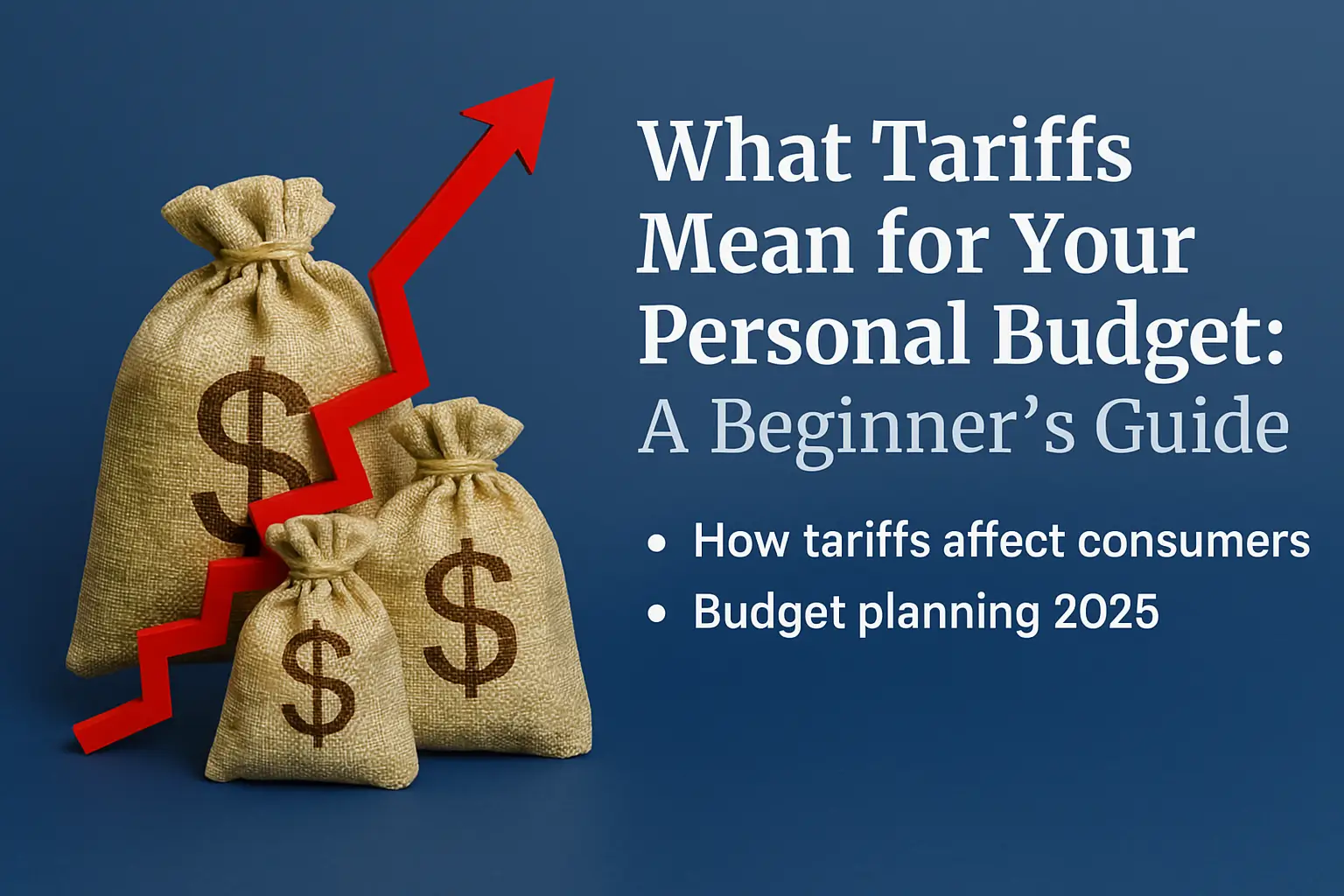Table of Contents
Introduction: Why Should You Care About Tariffs?
You don’t need to be an economist to feel the effects of global trade policies. If you’ve noticed groceries costing more, electronics prices going up, or furniture getting pricier lately, tariffs may be playing a role—even if you’ve never heard the word before.
Tariffs aren’t just about governments and international trade; they directly affect your personal budget, especially in 2025 as global economic uncertainty continues. In this guide, we’ll break down what tariffs are, how they impact everyday consumers, and how to adjust your budget planning to stay ahead.
What Are Tariffs and How Do They Work?
A tariff is a government-imposed fee on goods imported from another country. These are used for several reasons:
- To defend Indigenous industry by raising import prices
- To raise government revenue
- To leverage international negotiations during trade disputes
When tariffs are applied, the cost is initially paid by the importing company. However, companies typically pass that cost on to the end consumer—you.
Example:
If a $1,000 imported refrigerator has a 25% tariff, it now costs $1,250. The retailer doesn’t absorb that loss—they simply raise the price you pay.
How Tariffs Affect Consumers and Household Budgets
You may not notice tariff impacts overnight, but over time, they contribute to price inflation across multiple categories. Here’s how:
1. Higher Prices on Consumer Goods
Tariffs commonly affect imported electronics, home appliances, vehicles, clothing, and even food. For example:
- Smartphones and laptops imported from Asia may become 10–20% more expensive
- Furniture and home décor items may see price hikes due to material tariffs
- Meat and produce from international farms could spike in cost due to agricultural trade disputes
2. Reduced Product Variety
To avoid high import taxes, retailers may cut back on foreign goods, limiting your options and sometimes pushing you toward more expensive domestic alternatives.
3. Impact on Local Businesses
Small firms that rely on imported materials or products may increase prices, postpone services, or even close. This can lead to job insecurity, fewer hours, and slower income growth.
4. Rising Cost of Living
Tariffs feed into broader inflation, affecting rent, transportation, and even healthcare services, as providers face rising equipment and supply costs.
Real-World Examples: The Ripple Effect of Tariffs
Here’s a breakdown of how a single tariff can ripple through your budget:
| Category | Tariff Impact |
|---|---|
| Food | Meat and produce from countries like Canada, Brazil, or the EU can cost more due to agricultural tariffs |
| Electronics | Smartphones, TVs, laptops and components face price hikes from tech-specific import taxes |
| Vehicles | Car parts and imported vehicles become more expensive, increasing repair and purchase costs |
| Clothing | Fast fashion retailers may raise prices if sourcing from tariffed countries |
| Home Goods | Furniture, tools, and home improvement items go up in price due to tariffs on wood, steel, or textiles |
This hidden tax affects your pocketbook, not just the headlines.
Budget Planning in 2025: 7 Smart Strategies to Protect Your Wallet
Tariffs are beyond your control—but how you plan and respond financially is fully within your hands. Here are 7 practical strategies to keep your personal budget strong despite rising costs:
1. Audit Your Monthly Expenses
Review your recent bank and credit card statements. Identify products or categories where prices have crept up due to global trade changes.
2. Embrace Local Alternatives
Buy from local producers and manufacturers whenever possible. Not only can this reduce costs, but you’ll support your local economy too.
3. Reallocate Your Budget Categories
Shift a portion of your spending to absorb unavoidable cost increases. If groceries are up 10%, reduce non-essentials like entertainment or subscriptions temporarily.
4. Use Price Tracking Tools
Install browser extensions like Honey, CamelCamelCamel, or Google Shopping to monitor price changes and buy when deals are hot.
5. Stock Up Strategically
If you notice tariffs are coming on certain goods (e.g., electronics or pantry items), consider bulk buying or shopping early before prices rise.
6. Increase Your Emergency Fund Buffer
Inflation and unpredictable costs caused by tariffs are a reminder to build a larger emergency fund—aim for 4–6 months of expenses if possible.
7. Stay Informed, Not Overwhelmed
Follow credible finance blogs (like yours!), economic newsletters, or trusted YouTube channels to stay updated without being reactive.
Tariffs and Long-Term Financial Goals: What to Consider
If you’re saving for a down payment, investing in the stock market, or planning for retirement, it’s important to recognize that tariffs can impact both your short-term expenses and long-term plans.
- Investments: Markets may react negatively to trade tensions, affecting your portfolio.
- Loans: Higher product costs may contribute to rising interest rates on loans or credit cards.
- Income: Economic strain from tariffs could lead to layoffs or slower job growth in affected industries.
This doesn’t mean you should panic—but you should adapt your financial planning accordingly.
Final Thoughts
Understanding how tariffs affect consumers isn’t just for economists or politicians—it’s vital knowledge for anyone who wants to stay financially secure. While you can’t stop global trade disputes, you can control your spending, adjust your budget, and plan ahead.
In 2025, financial resilience isn’t just about saving more—it’s about thinking smarter in the face of global economic change.
Use our free Monthly Budget Tracker and Price Increase Watchlist Template to stay ahead of rising costs caused by tariffs and inflation.

